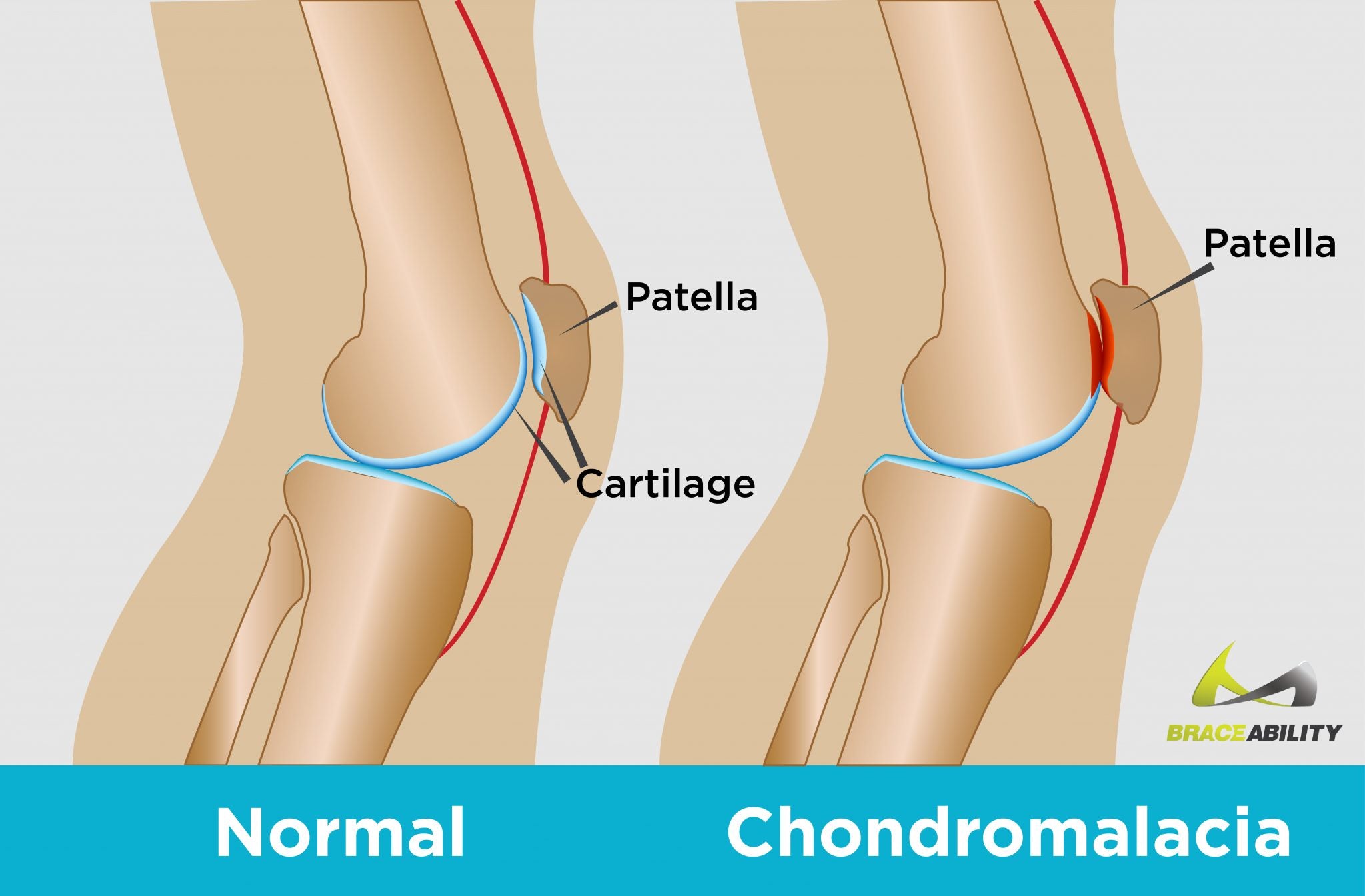Chondromalacia Patella Treatment
Chondromalacia is a general term referring to damage to the cartilage of the joints, but often this term is used to refer to damage to the cartilage that covers the patella (knee cap). This is because the knee joint is the area of the body most often affected by chondromalacia.

This cartilage is important as both a shock absorber and for ensuring the patella can glide smoothly through the femoral groove. When it is damaged, the result is often painful inflammation in the patellar region. At its onset, this pain can usually be characterized as a dull ache at the front of the knee behind the kneecap. (For more on types of knee pain, see “Anterior, Posterior, Medial & Lateral Knee Pain.”)
RICE Treatment for Chondromalacia
Treatment of chondromalacia varies based on the extent of the damage and the causal factors. The first line of defense for chondromalacia treatment is to rest the knee and to try to get swelling under control. Ice, compression, elevation and the use of anti-inflammatory medications can be quite effective for reducing this inflammation of the knee.
A chondromalacia patella knee brace can also be helpful both for resting the knee and for providing compression. Hinged chondromalacia patella knee braces provide compression and stability, optimized by medial and lateral hinges for added ligament support.
Correct Knee Cap Tracking with a Chondromalacia Patella Brace
Other conservative modes of treatment address some of the causal factors of chondromalacia, such as a patella that is not tracking as it should, whether that is due to weak thigh and hip muscles, injury or simply the anatomy of one’s knee.
There are several patella tracking braces, these knee braces for chondromalacia both help keep the kneecap centered when the joint moves, plus they feature silicone inserts that activate the joint muscles and stimulates circulation, thereby reducing inflammation, stimulating healing and enhancing proprioception (NF). These chondromalacia braces are ideal for active use, too.
Taping the knee can also be helpful for keeping the patella on track and thus for treating chondromalacia.
Activity-based Patellar Chondromalacia Treatment
Once you have the knee pain and inflammation associated with the condition under control, you can work on chondromalacia patella treatment exercises and stretches for the muscles that control the knee joint to prevent a recurrence of this issue. These typically put a lot of emphasis on strengthening the quadriceps, specifically.
Another relatively commonsense treatment for chondromalacia patella is to avoid aggravating activities as much as possible. If possible, one should switch to more knee-friendly sports or hobbies. Chondromalacia is thought to be linked with activities that put repetitive stress on the knees.
For instance, sports involving extended periods of running or jumping can be problematic. In fact, chondromalacia is sometimes referred to as “runners’ knee” though this term applies to a number of knee injuries. Sudden increases in the distance or terrain of one’s workout can also bring on chondromalacia.
There are also a number of careers that require long periods of time on the knees, such as someone who lays tile flooring for a living or is a housekeeper.
Obviously, avoiding such risk factors is not always an option. In such instances, one should try to reduce the stress as much as possible by wearing a knee brace for chondromalacia or by using knee pads of some sort.
Patellar Chondromalacia Treatment: Surgery
If conservative methods are ineffective, the next step for patellofemoral chondromalacia treatment may be surgery to remove the damaged and irritating cartilage. Or in some cases, treatment of chondromalacia may require a more extensive surgical procedure to realign the patella and reduce pressure in the patella region. (See “The Advantages of Arthroscopic Knee Surgery.”)
A knee immobilizer, knee splint or chondromalacia knee brace, may be necessary following the surgery to allow for proper healing.
After surgery, you will likely need to partake in chondromalacia treatment exercises to return strength and flexibility to the knee. Following surgery, one might use a knee brace for chondromalacia patella for added support and to safeguard against another injury during athletic activity or otherwise. Repeat surgeries are generally thought to involve more risk and longer recovery periods.









